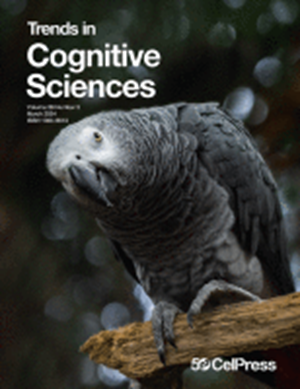课堂学习动力:脑间同步的作用。
IF 16.7
1区 心理学
Q1 BEHAVIORAL SCIENCES
Trends in Cognitive Sciences
Pub Date : 2024-12-01
Epub Date: 2024-11-03
DOI:10.1016/j.tics.2024.10.003
引用次数: 0
摘要
课堂学习是在相互关联的神经认知、动机和社会情感过程的多维背景下进行的。神经科学中的多主体方法可以利用多模态、时间分辨和非线性方法捕捉这些动态变化,并帮助我们确定在这种高度复杂的社会环境中促进或阻碍学习的因素。本文章由计算机程序翻译,如有差异,请以英文原文为准。
Classroom-based learning dynamics: the role of interbrain synchrony.
Classroom learning occurs within a multidimensional context of inter-related neurocognitive, motivational, and socioemotional processes. Multisubject approaches in neuroscience are poised to capture these dynamics using multimodal, time-resolved, and nonlinear methodologies and may help us identify the factors that facilitate or impede learning in such highly complex and social environments.
求助全文
通过发布文献求助,成功后即可免费获取论文全文。
去求助
来源期刊

Trends in Cognitive Sciences
医学-行为科学
CiteScore
27.90
自引率
1.50%
发文量
156
审稿时长
6-12 weeks
期刊介绍:
Essential reading for those working directly in the cognitive sciences or in related specialist areas, Trends in Cognitive Sciences provides an instant overview of current thinking for scientists, students and teachers who want to keep up with the latest developments in the cognitive sciences. The journal brings together research in psychology, artificial intelligence, linguistics, philosophy, computer science and neuroscience. Trends in Cognitive Sciences provides a platform for the interaction of these disciplines and the evolution of cognitive science as an independent field of study.
 求助内容:
求助内容: 应助结果提醒方式:
应助结果提醒方式:


